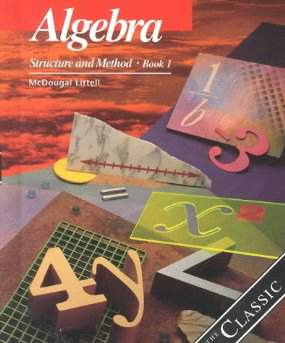Connecting...

This is a quick preview of the lesson. For full access, please Log In or Sign up.
For more information, please see full course syllabus of Algebra 1
For more information, please see full course syllabus of Algebra 1
Algebra 1 Techniques for Multistep Equations
Lecture Description
Dr. Eaton will cover Techniques for Multi-Step Equations in this video lesson. You will first learn what they are and then the strategy for solving such equations. The lesson concludes with four comprehensive examples.
Bookmark & Share
Embed
Share this knowledge with your friends!
Copy & Paste this embed code into your website’s HTML
Please ensure that your website editor is in text mode when you paste the code.(In Wordpress, the mode button is on the top right corner.)
×
Since this lesson is not free, only the preview will appear on your website.
- - Allow users to view the embedded video in full-size.
Next Lecture
Previous Lecture









































 Carleen Eaton
Carleen Eaton Grant Fraser
Grant Fraser Eric Smith
Eric Smith
 Answer Engine
Answer Engine



1 answer
Sat Jul 27, 2013 9:44 AM
Post by Yolanda Britt on July 5, 2013
what about really long equations
1 answer
Wed Jun 26, 2013 11:28 PM
Post by Taylor Wright on June 17, 2013
In example 2:
Couldn't it be written as (z/5)-(14/5) ? In this case, how would someone know that the division wasn't performed first?
ie: (10/5)-(15/5) equals both 2-3 which = -1 and (10-15)/5 which = -1
It seems that either order the problem is performed in this instance, that the result remains the same, so how would one know which order for the example 2? Could you also add (14/5) to both sides and get the same result?
1 answer
Sun Oct 21, 2012 7:40 PM
Post by Jona James on October 12, 2012
on example 2 i know to get rid of the division you multiply 5 on both sides, and the ''5'' on the left side cancels out, while doing the math on the opposite side, but why?? why does the 5 on the left side cancel out? i memorize the rule but frustrating not knowing why, i think i know the answer i just forgot,,, thank you
1 answer
Thu Aug 9, 2012 5:59 PM
Post by Nagayasu Toshitatsu on August 9, 2012
For example III, I think it would be easier if you set x as the middle number. Then, you would have (x-1)+(x)+(x+1)=66. You can take out the parentheses, and cancel out the ones. After that, you would get 3x=66, which immediately leads to the answer that x=22, and finding out the consecutive numbers. I think it would be easier that way.
1 answer
Wed May 12, 2010 12:06 AM
Post by shah Mahmoodi on April 17, 2010
Excellent, excellent I love it thank you so much Dr Carleen you me bless with your knowledge; I also found your video us full